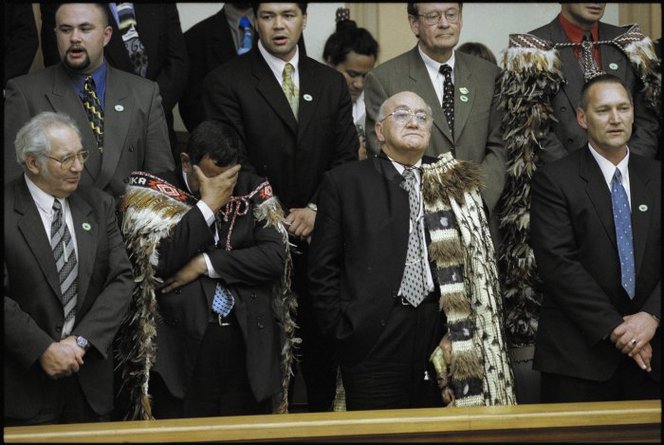These are the things which divide the Māori from the Europeans. They feel that the promises made by the Europeans have not been fulfilled, while all that the Māori have promised has been fulfilled.
Hori Kerei Taiaroa, MHR speaking in NZ Parliament 21 October 1878
![The Ngai Tahu land claim : rival committees' differences. [1925]](https://christchurchcitylibraries.com/Heritage/Photos/Disc2/IMG0082.jpg)
Ngāi Tahu began selling their land in a series of purchases between 1844 and 1864, resulting in 34.5 million acres of land passing into Crown hands for the total sum of £14,750. These purchases were underscored by dubious Crown negotiations with rival tribes such as Ngāti Toa over Ngāi Tahu land, poor or absent surveying work or deeds that were drawn up in haste resulting in much uncertainty.
The Canterbury Purchase, negotiated by Henry Tracey Kemp on behalf of the Crown, a deal known as Kemp’s Deed, was the largest purchase with 20 million acres selling for £2,000.
Despite assurances, it rapidly became obvious to Ngāi Tahu that many of the terms of sale that were agreed to - including the building of schools and hospitals, the surveying of reserves and the exclusion of traditional food gathering places, mahinga kai - were not being honoured by the Crown. The first formal statement of grievance was made in 1849 by Matiaha Tiramōrehu with nearly every subsequent Ngāi Tahu chief continuing the fight for justice.

In 1986, Ngāi Tahu filed its claim with the Waitangi Tribunal with a total of 73 grievances that included not only disputes over land and the Crown’s promised provisions, but also matters related to fisheries, the loss of language and the lack of recognition of Māori values. These grievances were described under nine general headings that related to the eight large regional land sales, with the ninth related to the loss of mahinga kai. These were referred to as the Nine Tall Trees of Ngāi Tahu.
After nearly 150 years of protest, petitioning, negotiations and various commissions of enquiry, the Ngāi Tahu Claims Settlement Act was finally passed in 1998. This included:
- financial and cultural redress,
- the return of Aoraki/Mount Cook to the tribe, which Ngāi Tahu then immediately gifted back to the people of New Zealand,
- an apology from the Crown.
Ngāi Tahu has since invested heavily in iwi revitalization initiatives and has grown from strength to strength economically and culturally.
As Aotearoa New Zealand moves into a post-settlement era, Ngāi Tahu now sit poised as a cultural and economic giant of the South Island (Te Waipounamu) working as partners alongside national and local authorities.
Recommended resources
- The Ngai Tahu Report, 1991 - Definitive account from the Waitangi Tribunal. Has summary of grievances, findings and recommendations. Useful list of contents and maps.
- Te Whakataunga: Celebrating Te Kerēme - the Ngāi Tahu Claim Information from Te Rūnanga o Ngāi Tahu
- Ngāi Tahu settlement information from Ngāi Tahu including:
- Te Kerēme Index to the Ngāi Tahu Land Claim from Christchurch City Libraries
- Te Maire Tau. Ngāi Tahu - The Ngāi Tahu claim, Te Ara - the Encyclopedia of New Zealand, updated 22-Sep-12
- Biography of the Ngāi Tahu chief, Hone Tikao, signatory to the Treaty of Waitangi and to the Kemp’s Deed of sale for the Canterbury purchase.
- Raising their voices: A struggle through centuries - Informative samples of Maori objections to and actions on the Treaty from Treaty2U, Museum of New Zealand Te Papa Tongarewa.

